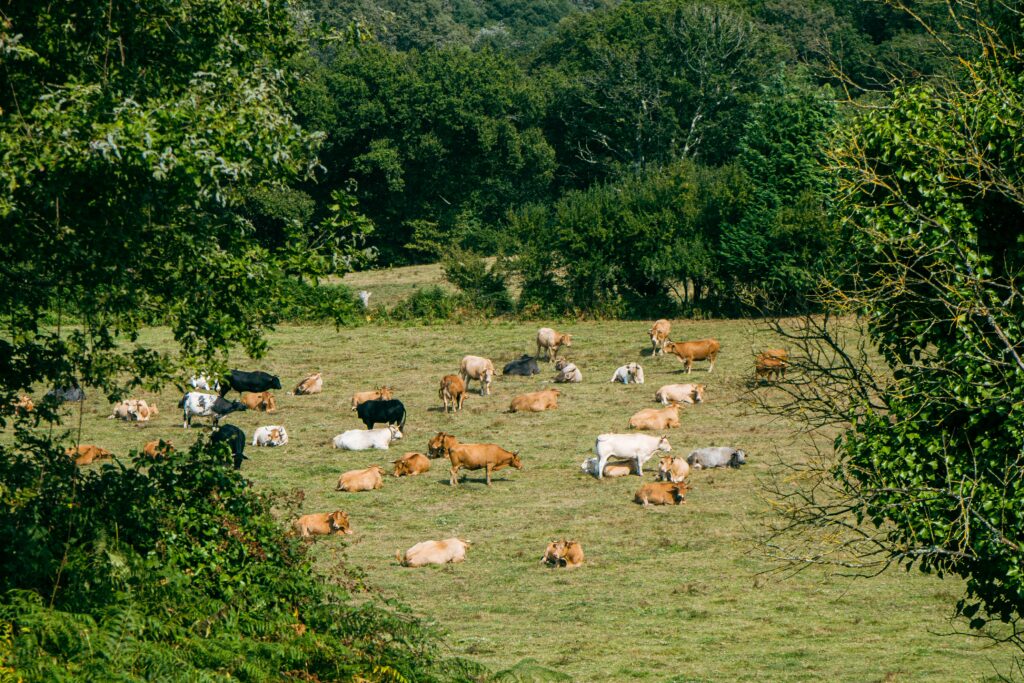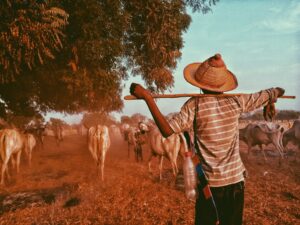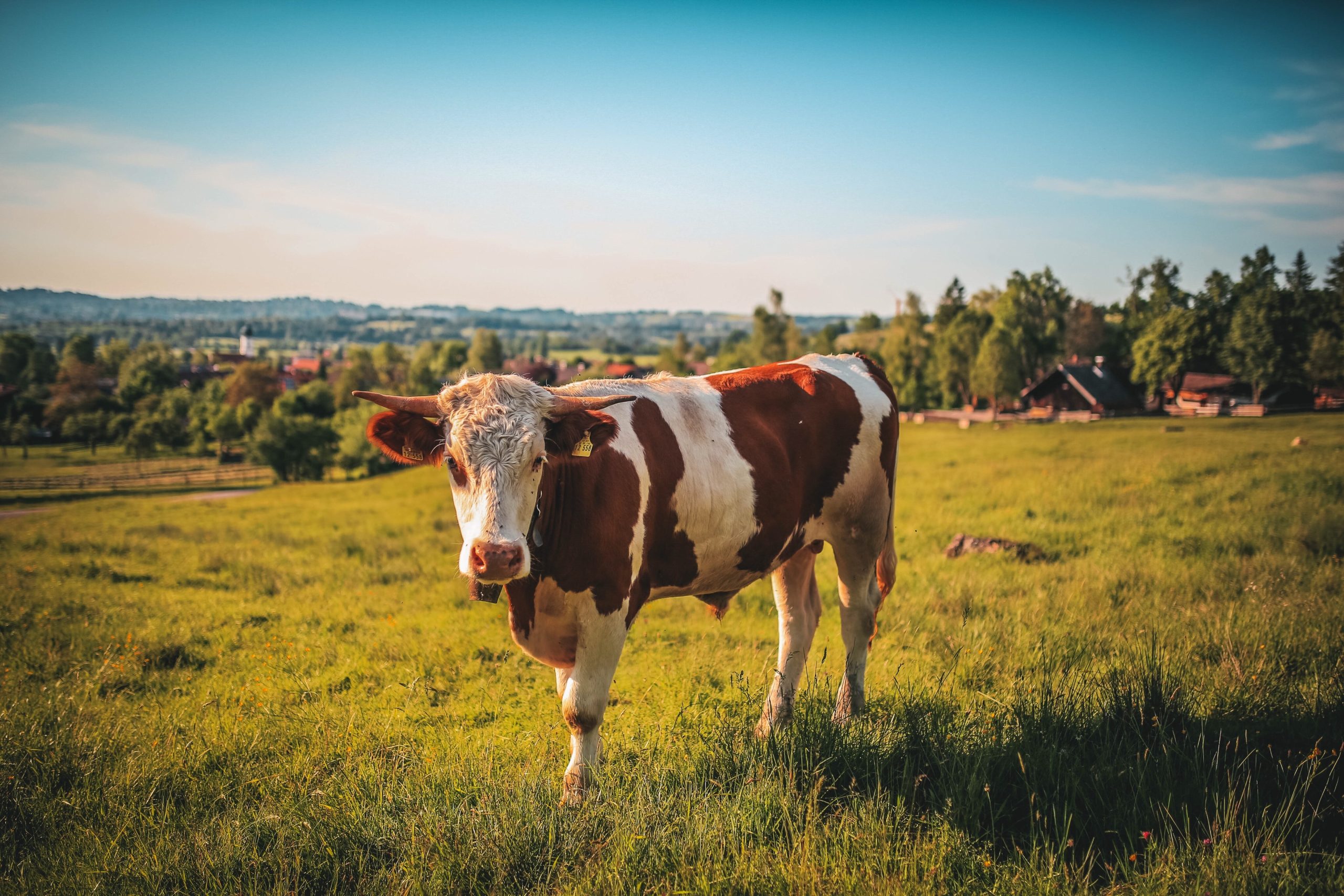CATTLE FARMERS BE AWARE: Brucellosis Can Harm Your Own Body!
Every month reports are received about how Brucellosis is spreading in South Africa. It is the responsibility of every farmer to stop the spread of Brucellosis. Dr. Frans Banting, a veterinarian who has had the disease for 40 years, tells his story.

Disease in cattle
The disease is also known as Contagious Stillbirth (BM) or Contagious Abortion (CA) in English. Brucellosis is a herd disease. When one animal is tested positive, the entire cattle herd is considered to be infected. BM is caused by the bacterium Brucella abortus bovis.
Infected cows and pregnant heifers usually remain permanent carriers of the germ and can spread the disease for years by excreting bacteria. The udder and uterus are the main organs that become infected. However, blood and muscle tissue can also be infected for a short period of time, thereby transmitting the disease to humans. However, this method of transmission rarely occurs. Production losses occur in that animals that test positive for bruising must be slaughtered.
Additional financial losses are suffered as a result of:
1. Cost of an abortion
2. Cost of perinatal mortality
3. Cost of temporary infertility
4. Extended inter-calf periods
5. Cost of replacement sugar cows
6. Cost of replacement bulls
7. Cost due to the mortality of sero-positive cows
8. Milk and meat production losses
9. Vet Costs
(Above information provided by Dr. Chris van Dijk, (dairyvetza@outlook.com)
Disease Signs
Pregnant cows and heifers that are infected for the first time and have no immunity to the disease most often abort at four to seven months of gestation. Such a foetus is often hairless and about 30 to 40 centimeters long. Adult, dead calves can also be born. Weak calves can also occur. In a few cases, infected animals can abort for a second time, but this is rare. After such an abortion, the afterbirth usually sticks.
Temporary cattle infertility after an abortion as well as mastitis (udder inflammation) also sometimes occurs. Chronically infected animals can develop a knee swell or gout cream. Cows that are carriers of bruising show no signs of the disease and can calve normally annually. However, there is a danger that such cows can carry the disease over a long period of years and spread to other animals. Infection in bulls is rare and of lesser importance.
Brucellosis in humans
In humans, Brucellosis is known as Malta fever or alternating fever. Alternating fever is caused by Brucella abortus bovis and Malta fever is caused by Brucella melitensis, which is found in goats.
Transfer
People become infected by one of the following:
1. Ingest raw milk, ice cream, butter and cheeses infected.
2. Eating or handling contaminated raw or half- ground meat, biltong or meat products. This risk is small because the bruising germ does not like dry, hot environments. If the animal is slaughtered and hung in an abattoir (lowering the pH) the risk of Brucellosis is minimal.
3. By touching and dealing with an infected dead or living cattle calf, uterine fluid or afterbirth or bulging. Especially if help is provided with a difficult birth or removal of a dead calf, the danger of infection is high.
4. Accidental needle contact containing the vaccine, or dumping and thrush from Strain 19 or RB 51 vaccine on the mucous membrane of the eye or mouth, as well as open wounds.
5. If contaminated material is ingested (milk, meat, meat products, biltong) or lands on mucous membranes (uterine fluid or fluid from calf) the person may become infected. Such an infection can occur through the eyes, mouth, nasal cavity or even through the skin and cause bruising.
Symptoms
Dr. Frans Banting has been infected with the disease for more than 40 years. About two weeks after the infection occurred, the first acute attack began.
• Fever: The highest fevers with glows in the whole body, as well as sweat bursts occur especially at night. The worst attacks occur between 22:00 and 01:00. During the morning and early afternoon from 07:00 to 14:00 there is usually no fever.
• Muscle aches because of muscle inflammation, especially in the armpits and thighs.
• Arthritis and painful joints: Especially the knees and hands are painful and swollen.
• Headache: This is not an ordinary headache, but a very sudden and severe stabbing headache in a localized place. It doesn’t last long, but it feels like a long nail is slammed into your head. It usually disappears within a minute and can even last only a few seconds.
• Fatigue: An indescribable fatigue often occurs. It often takes a very long time – anything from one week to 6 months.
• Deterioration and muscle weakness: It sometimes becomes so severe that a person can no longer work.
• Weight loss and chronic diarrhoea: A person can lose anything from 3 to 10 kg in a matter of weeks to a month.
• Depression: Loss of interest in life.
• Insomnia: A person often wakes up at night (especially between 22:00 and 24:00) and cannot sleep or sleep badly.
• Appetite: peculiarly, the appetite is not affected. The above symptoms are often confused with those of ordinary flu and in many cases a correct diagnosis is not made in time.
Most acute cases pass within a month or two. In a large percentage of patients, chronic (prolonged) infection with more or less the following symptoms develops:
• Severe fatigue with a typical pattern. During the morning and early afternoon, the person feels normal. From ±15:00 to late at night, the fatigue is severe. It repeats daily and can last for months or even years.
• Muscle weakness: A normal life is often no longer possible.
Treatment
If the cattle disease is diagnosed and treated early, the patient can recover. A diagnosis is confirmed by a positive blood test. Unfortunately, it is a fact that many physicians do not recognize the disease or have little knowledge of it.

A diagnosis is not made successfully in such cases. Treatment consists in administering various antibiotics together with anti-inflammatory drugs, painkillers and multivitamins.
Antibiotics are administered through the mouth for three to four months while intravenous drugs are administered for five consecutive days along with vein feeding. In chronic cases, the treatment is repeated if typical symptoms are experienced. RB51 vaccine as a cause of bruising in humans cannot be detected with regular blood tests – and does not respond to regular treatment – let your doctor know if you have a suspicion that RB51 may be the cause of infection.
Consequences
In severe cases, it may be necessary to grant the patient sick leave for a long period of time. In some cases, it is even advisable to retire or change jobs. Thus, this disease with its consequences can change or cut short a person’s entire life and career.
How brucellosis can enter the body from contact with different animals.
Prevention
Cattle are tested by means of a blood sample. When there is a suspicion that the disease occurs in a herd, the following procedure should be followed: Test all animals older than 18 months on the farm. Positive animals are marked with a C on the neck. Let slaughter all positive responders as soon as possible (under a Red Cross permit).
Test the herd every two months until two negative tests have been obtained. Test again six months later and then annually. If adult cows are purchased, they must first be tested. Brucellosis is a State-controlled disease. Use the available vaccines (Brucella Strain 19 and RB 51) and administer them by prescription.
When buying animals, first obtain a seller’s statement that the animals come from a certified Brucellosis-free herd. Quarantine the animals and test them again. Heifers should be kept separately until they have calved. Heifers are tested if they are pregnant for four to five months and then again if they have calved.
People
Never deal with suspicious infectious material such as dead calves, live weak calves or fruit fleas without gloves or eye protection. Never drink raw milk from an unknown, untested herd.
Remember: a Brucellosis-infected herd, cow, dead calf or raw milk is a time bomb and can drastically change or completely ruin your life.
By Dr. Frans Banting, Veterinarian.

